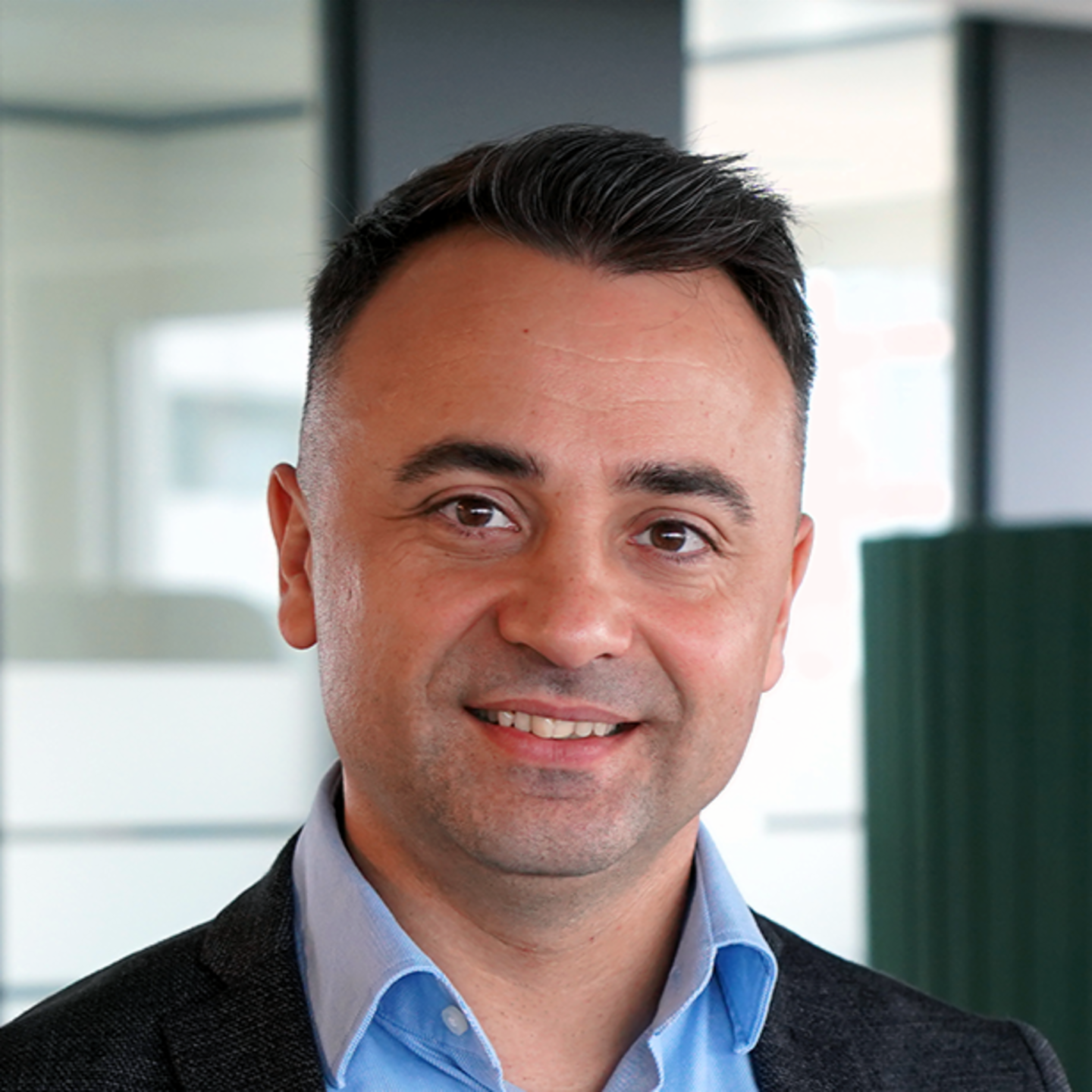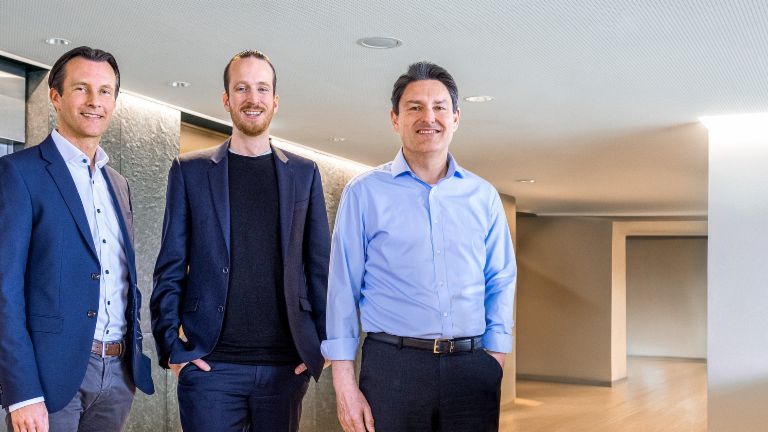- AI is changing the way debt collection works – but at EOS, human empathy stays at the heart of the process.
- Interview with Paul Baltag, Digital Transformation Manager, EOS Romania and Dobrin Mirevski, Chief Digital Officer in EOS Bulgaria
- Two digital leaders from EOS offer an inside look at how automation is really being used – and where it’s headed next.
- From chatbots to intelligent Agentic AI, discover how tech is shaping the future of collections at EOS.
What are the most exciting tech trends for you?
Paul: I believe Agentic AI stands out as the most exciting trend today. Unlike traditional automation, Agentic AI enables the orchestration of autonomous agents that navigate unstructured processes and adapt dynamically. By collaborating as a team, these AI agents can tackle complex workflows that were previously too unpredictable or resource-intensive to automate, unlocking new efficiencies and sparking innovation.
Dobrin: AI is undoubtedly the most disruptive force in business today. It holds tremendous promise, but the practical application – especially in highly regulated industries like the one where we at EOS operate – is still in the early stages of development. We’re still exploring how AI can be applied in business and whether it can generate real value. At this stage, I see the strongest business case in combining AI with Robotic Process Automation (RPA - Definition at the end of the text.) – using automation for well-defined tasks while exploring how AI can also support decision-making and creative and complex activities, like developing individualized solutions for our consumers.

Agentic AI is an exciting trend today. It creates autonomous agents that navigate unstructured processes and adapt dynamically.
If you had to outline a future vision: What will debt collection look like in ten years?
Paul: I believe the transformation will happen much faster! Once the regulatory necessities are clear, I think debt collection will be powered by intelligent systems that combine AI and human expertise. Simple cases will be handled via intuitive, 24/7 self-service channels. For more sensitive matters, hybrid AI-human teams could work together – AI providing insights and humans managing negotiations with empathy and precision. This approach will drive efficiency, recovery rates, and customer satisfaction.
Dobrin: From my point of view, debt collection will always need a human touch because you need to psychologically understand the debtor. And AI just can’t do that yet. Therefore, technology will support — not replace — these personal interactions. I see AI helping agents adapt their communication tone, analyze sentiment, and respond with empathy. In legal collection, where processes are more structured and rule-based, automation will become even more widespread. In the future, with tech-savvy generations on the rise and expecting digital-first experiences, self-service portals and virtual assistants will become standard.
Where do you currently see the greatest value of AI and automation in the financial industry?
Paul: AI excels at processing unstructured data — like emails, comments, or call transcripts — and turning them into insights. This boosts productivity and enables more accurate decision-making.
Dobrin: The biggest value of automation is the elimination of repetitive, error-prone tasks. Automation handles rule-based work faster and with fewer mistakes, improving both productivity and compliance. It frees people to focus on what truly matters — thinking, solving problems, and supporting customers.
Are some AI-driven processes overhyped?
Dobrin: There’s a lot of hype — especially in areas where the technology still lacks maturity. Adoption in finance will take time because of the sensitivity of the data involved. We must build trust and real-world experience before scaling.
Paul: Maybe not overhyped, but there are still challenges that remain unsolved — like balancing creativity and reliability. Constraining models too tightly weakens results, whereas giving them too much freedom risks inaccuracy. Finding that middle ground is still a work in progress.
.jpg/jcr:content/DMI_1x1_(1).jpg)
There’s a lot of hype, especially where technology lacks maturity. In finance, adoption will take time due to sensitive data.
What innovations are you currently driving forward within the EOS Group?
Paul: We’re rolling out a growing ecosystem of intelligent tools to support our colleagues — starting with our generative AI assistant SofiK on the K+ platform. K+, which is short for Kollecto+, is a debt collection software that we developed. The AI Add-on, SofiK, provides real-time case guidance and automates routine workflows in the case processing for our collection agents. Of course, we also offer consumers chatbots to process debt collection requests. Also, we’ve already integrated email automation, call transcription, and analytics. Voice AI is in the pipeline. These efforts, paired with RPA for rule-based tasks, help us scale while maintaining quality and delivering exceptional service. They’re proof that we don’t just follow trends — we set them.
Dobrin: For me, it’s about depth and reach. RPA is already active in over a dozen countries, with more than 140 bots saving around 120,000 work hours yearly. It relieves employees of routine tasks to offer more time for more challenging individual solutions. And we’re seeing a rising interest in other local EOS entities to implement automation for repetitive tasks.
What sets EOS apart in the market when it comes to responsible innovation and customer-centricity?
Paul: EOS stands out with its culture that champions responsible innovation. We experiment, analyze results, and align innovation with core values like transparency and fairness. With this holistic approach, we don’t innovate for the sake of it — we solve real problems, improve employee workflows, and elevate customer experiences.
Dobrin: We put people first — on both sides. That means helping employees offload tedious tasks and empowering them to work on individual solutions for sustainable debt relief. And giving defaulting payers easy access on many digital channels so they can find solutions to their financial problems. That’s what responsible innovation looks like.
GenAI, Agentic AI & Robotic Process Automation – What’s the Difference?
Generative AI (GenAI) is based on artificial intelligence that is capable of generating new content such as human-like text, images, program code, music or other media. It’s great for drafting, designing, and ideation – but it reacts rather than acts.
Agentic AI goes a step further: it plans, decides, and performs tasks independently. Think of it as an autonomous assistant that combines tools, sequences actions, and works toward goals.
Robotic Process Automation (RPA) handles repetitive, rule-based tasks like data entry or invoice processing. It’s fast and reliable – but not intelligent in the true sense.
Reach out if you want to see how innovation and empathy work together.

Sabrina Ebeling
Corporate Communications & Marketing
Phone: +49 40 2850-1480
Explore more insights from EOS



